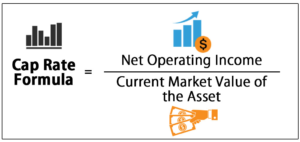Curious what your apartment building is worth? In this complete valuation guide, learn how to value multifamily properties using cap rates, broker price opinions, T-12 analysis, and rent comps.
Determining the actual value of your multifamily property involves much more than gut feeling or simple multiplication of rents. Whether you’re wondering about the worth of your apartment building, planning to sell, refinance, or simply evaluate your investment portfolio, understanding the methodologies behind multifamily property valuation is crucial for making informed decisions.
This comprehensive guide breaks down the most reliable valuation approaches industry professionals use today, including DS Property Experts’ Investment Property Valuation Calculator (IPV) and 7-step valuation process.
Why Multifamily Property Valuation Matters
Knowing your property’s worth isn’t just academic—it’s the foundation of intelligent investment decisions. Accurate multifamily property valuation helps you:
- Set realistic selling prices that attract serious buyers without leaving money on the table.
- Secure appropriate financing by demonstrating your property’s actual market value to lenders.
- Identify value-add opportunities that could significantly increase your returns.
- Make strategic hold/sell decisions based on current market conditions.
- Negotiate from a position of strength when buying, selling, or refinancing.
Many multifamily owners underestimate their apartment building’s worth, potentially missing out on hundreds of thousands, sometimes millions, in equity. Others overvalue their assets, leading to unrealistic expectations and stalled transactions. By mastering valuation fundamentals, you position yourself to maximize returns regardless of market conditions.
Breaking Down the Core Valuation Methods
Three primary approaches exist for determining multifamily property valuation, each with specific applications and strengths:
- The Income Approach: This method is most relevant for investment properties. It values properties based on the income they generate. For multifamily investors, this is typically the most important approach.
- The Sales Comparison Approach: This method compares your property to similar recently sold properties, accounting for differences in features, condition, and location.
- The Cost Approach calculates the cost of rebuilding the property from scratch, plus land value minus depreciation. While less commonly used for multifamily valuation, this approach can provide useful context in specific scenarios.
Using Cap Rates to Value Multifamily Properties
The capitalization rate (cap rate) is one of the most fundamental metrics in multifamily property valuation.
Cap Rate = Net Operating Income ÷ Property Value
Property Value = Net Operating Income ÷ Cap Rate

For example, if your 20-unit apartment building generates $150,000 in annual NOI, and similar properties in your market trade at a 6% cap rate:
$150,000 ÷ 0.06 = $2,500,000
Finding the “right” cap rate for your market requires:
- Local commercial brokers.
- Recent comparable sales.
- Industry reports (Moody’s Analytics, CoStar market data, REIS reports, etc.).
Understanding how cap rates influence apartment building worth is vital for investors seeking reliable multifamily property valuation outcomes.
Analyzing Your T-12 Financials
The Trailing 12-month (T-12) statement shows actual income and expenses over the past year, making it a critical tool in multifamily property valuation.
T-12 includes:
- Gross Potential Rent.
- Vacancy & Collection Loss.
- Operating Expenses.
- Net Operating Income (NOI).
Your T-12 is critical in any broker price opinion or formal valuation report.
Leveraging Rent Comparables (Rent Comps)
Rent comps are commonly reviewed in a broker’s price opinion to support projected rent increases or revenue growth.
- Validating current rent levels or identifying untapped income potential.
- Supporting projections in your pro forma for value-add scenarios.
- Justifying higher valuations based on achievable rent increases.
To find meaningful rent comps:
- Use platforms like CoStar, Apartments.com, or Rentometer.
- Survey nearby competing properties directly.
- Work with local property managers who track market rents.
- Review listings for similar units in your immediate area.
The most valuable rent comps share these characteristics with your property:
- Similar unit sizes and bedroom counts.
- Comparable amenity packages.
- Equivalent building age and condition.
- Location within the same submarket.
- Similar tenant demographics.
For example, if comparable 2-bedroom units in your area rent for $1,500 while yours average $1,300, you might have $200 per unit in monthly upside potential. A 20-unit building with ten 2-bedroom apartments costs $24,000 in additional annual income. A 6% cap rate represents $400,000 in untapped value.
What Is a Broker Price Opinion (BPO)?
A Broker Price Opinion (BPO) is a professional estimate of your property’s value provided by a real estate broker familiar with your market. For many multifamily investors, obtaining a broker’s price opinion is essential in understanding the worth of their apartment building in the current market.

How BPOs Work:
- The broker reviews your property’s financials and physical characteristics.
- They compare your property to recent sales and current listings.
- They apply their market knowledge and experience.
- They provide a value range with supporting rationale.
Pros of Using a BPO:
- Typically, less expensive than formal appraisals.
- Faster turnaround time.
- Market-based perspective from an active transaction participant.
- Often includes marketing insights and advice.
Cons of Using a BPO:
- Less standardized methodology than formal appraisals.
- May be influenced by the broker’s interest in securing a listing.
- Not accepted by most lenders for formal loan underwriting; a formal appraisal is typically required.
- Potentially less comprehensive analysis.
BPOs work best as a preliminary valuation tool or as a supplement to your own analysis. For refinancing or loan applications, virtually all lenders will require a formal appraisal from a licensed appraiser.
Increasing Your Property’s Value
Improvements in NOI directly raise your apartment building’s worth, as demonstrated by using multifamily property valuation tools like the IPV Calculator or securing a broker price opinion to support your updated asset value.

Income Enhancement Strategies:
- Rent Optimization: Gradually bring below-market units to market rates through strategic increases at lease renewal.
- Value-Add Renovations: Strategic upgrades that justify premium rents, such as:
- Kitchen updates (new appliances, countertops, cabinets).
- Bathroom modernization.
- Flooring upgrades.
- In-unit laundry additions.
- Smart home technology integration.
- Additional Income Streams:
- Laundry facilities or service.
- Storage unit rentals.
- Reserved parking fees.
- Pet rent and deposits.
- Application and administrative fees.
Expense Reduction Strategies:
- Utility Optimization:
- LED lighting conversions.
- Low-flow water fixtures.
- Submetering utilities where feasible.
- Energy-efficient appliance upgrades.
- Operational Efficiencies:
- Renegotiating service contracts.
- Implementing preventative maintenance programs.
- Reviewing insurance coverage for cost savings.
- Property tax assessments appeals when appropriate.
Let’s see the impact in action:
Before Value-Add:
- 20-unit property with average rent of $1,000 ($240,000 annual).
- 55% expense ratio ($132,000 expenses).
- NOI: $108,000.
- Value at 6% cap rate: $1,800,000.
After Value-Add:
- $5,000 per unit renovation ($100,000 total investment).
- New average rent: $1,200 ($288,000 annual).
- Improved expense ratio of 50% ($144,000 expenses).
- New NOI: $144,000.
- Value at 5.75% cap rate: $2,504,348.
That’s a value increase of $704,348 on a $100,000 investment—a substantial return demonstrating why understanding valuation is critical for wealth creation through multifamily investing.
Final Thoughts: Putting It All Together
Accurate multifamily property valuation requires synthesizing multiple approaches and perspectives. While cap rates provide a helpful starting point, sophisticated investors incorporate:
- Detailed analysis of historical and projected NOI.
- Thorough rent comparable research.
- Up-to-date local market data and recent sales.
- Property-specific considerations.
- YOC (yield on cost) is the net operating income (NOI) divided by the total project cost. It helps investors assess a property’s risk-return profile.
For properties valued at over $1 million or with complex considerations, it is highly recommended that you work with professionals specializing in multifamily property valuation. An experienced multifamily broker, appraiser, or investment advisor can provide insights that significantly impact your bottom line.
At DS Property Experts, we guide you through the complete multifamily property valuation process, offering insights from rent comps to broker price opinions and beyond.
Ready to discover what your multifamily property is really worth?
Contact our team for a comprehensive valuation, rooted in proven methods, expert tools, and market intelligence.

